Researching Italian Family History: Leonardo Scalia’s story as an immigrant to Queensland
By Christina Ealing-Godbold, Research Librarian, Information and Client Services | 30 July 2024
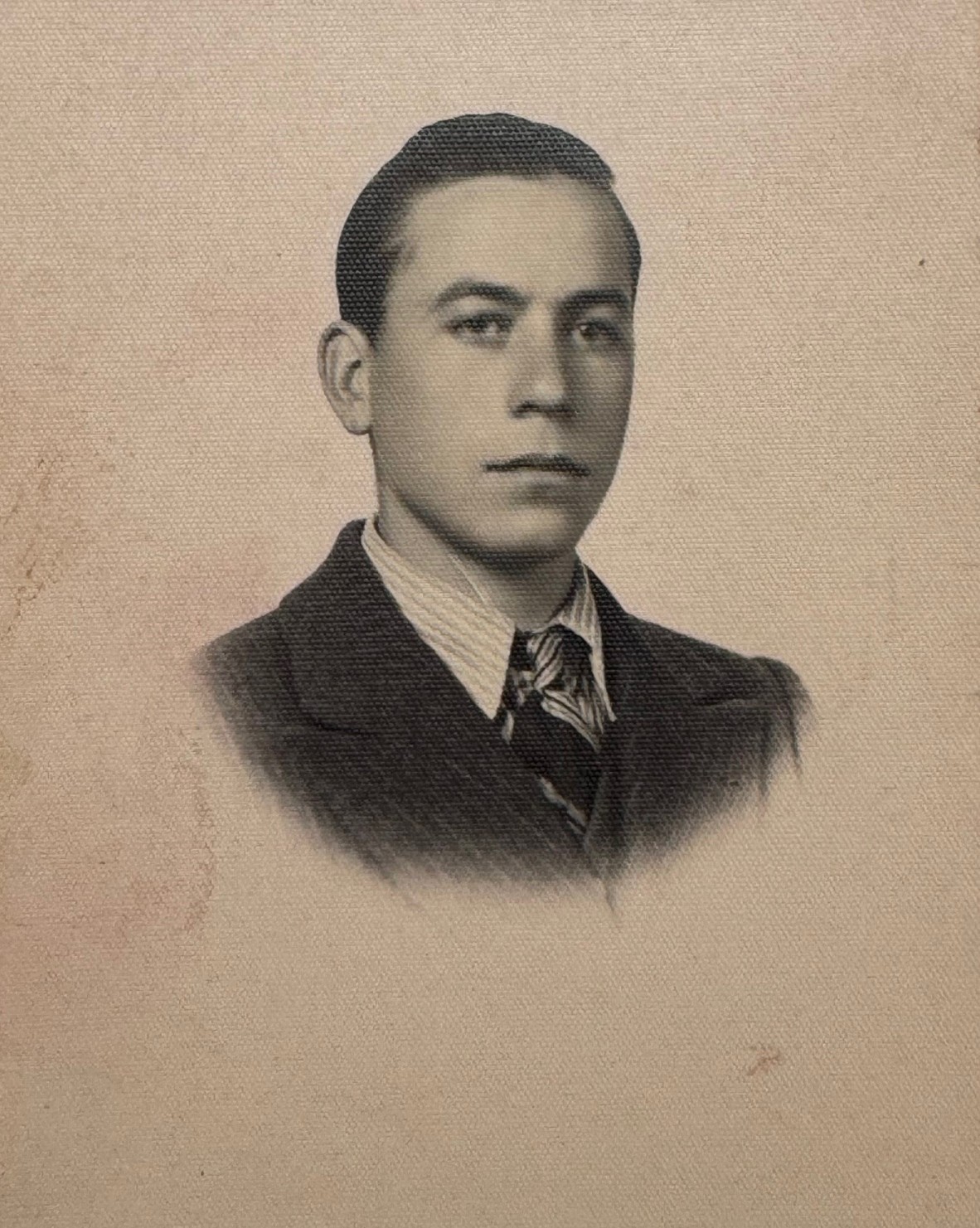
Passport photograph of Leonardo Scalia in 1951. Image courtesy of the Scalia family.
From pizza to cappuccino, cannoli to red wine, Italian immigrants have played a significant role in the social life of Queensland. However, researching Italian ancestors is challenging in many ways. Beside the language difficulties that resulted in many different spellings of names, researching Italian family history has many complex layers. Of course, the first rule of family history is to work backwards from yourself, ensuring that you know the correct names of your ancestors.
Italians came to Queensland from the very early days of Moreton Bay. Three Italian priests (accompanied by a French priest) found themselves on Stradbroke Island ministering to the Aboriginal people in the 1840s. However, the mission closed, and the 3 individuals moved on. The first group migration of Italians into Queensland occurred in 1891, when a Piedmonte citizen, Chaiffredo Venerano Fraire, travelled to that region of Italy to procure workers for the cane industry in North Queensland. There was concern among cane growers that with the ending of the South Sea Islander labouring scheme, they would not have sufficient labour to ready their crops for crushing and milling. As a result of this scheme, about 330 people came to Queensland and took up land and work in the Ingham area.
Chain migration continued throughout the first decades of the 20th century, as Italians in Queensland sponsored other family members to come to the state. Following World War II, a Commonwealth-funded assistance scheme allowed more than 42,000 Italians to take up a new life in Australia.
Researching Italian ancestry requires a knowledge of where the immigrants were resident prior to emigration. The unification of Italy did not occur until 1870, and the records were in many different formats and archives. Italy today has more than 100 provincial archives. Records are held by the Comune within the Archivio di Stato (Provincial archives), and written applications can be made for birth, marriage and death certificates as well as “Status of the Family” documents. Some records are available on databases such as Ancestry, Findmypast and FamilySearch, but there are significant gaps. After undertaking the research and asking family members to provide clues, it is often necessary to write to the relevant archive to obtain documents, and correspondence needs to be written in Italian. Research manuals providing the names and addresses of provincial archives are available at State Library of Queensland.
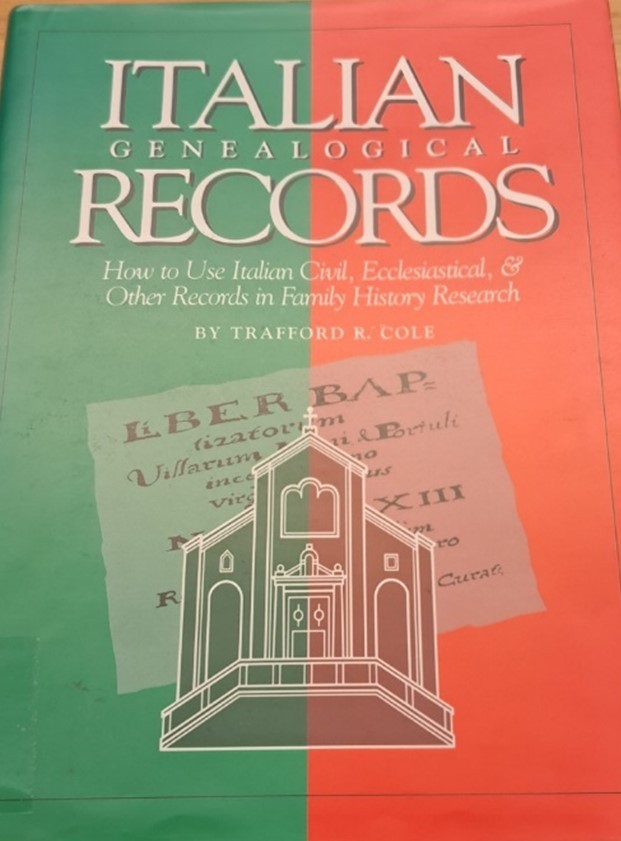
An example of one of the published works providing guidance on Italian records, locations and addresses. State Library of Queensland. Italian genealogical records : how to use Italian civil, ecclesiastical & other records in family history research / by Trafford R. Cole
Leonardo Scalia’s story
Nineteen-year-old Leonardo Scalia arrived as an immigrant in 1951, heading for the cane fields of Home Hill and Ayr. Born in 1932 to Guiseppe and Agata Scalia in Giarre, a comune in the Metropolitan City of Catania, Sicily, Leonardo and his family suffered the privations of World War II, enduring bombings and food shortages in an island regularly overrun by troops. Leonardo’s father died when he was just a baby, and from the age of 12, he worked on the family farm, weeding and packing potatoes and vegetables.

Leonardo, aged 12, in Giarre Sicily. Image courtesy of the Scalia family.
The Family Search database shows many men named Leonardo Scalia in Sicily and also many named Guiseppe (his father’s name). None has led to uncovering the rest of the family tree in the 19th century, thereby requiring an approach by formal letter to the Giarre Comune records.
In 1951, with the Commonwealth Government Assistance Scheme providing passage to Australia, Leonardo travelled 60 kilometres to the port of Messina to board the ship, MV Toscana. Part of the Lloyd Triestino line, the ship was very crowded, and Leonardo had a bunk 3 levels below the deck and also below the waterline. The ship had very large rooms below deck, filled with bunks positioned top and bottom. In the first 3 days, he was often seasick, but he became used to the roll of the ship. Food was sufficient but there was no recreation or activities on this immigrant ship.
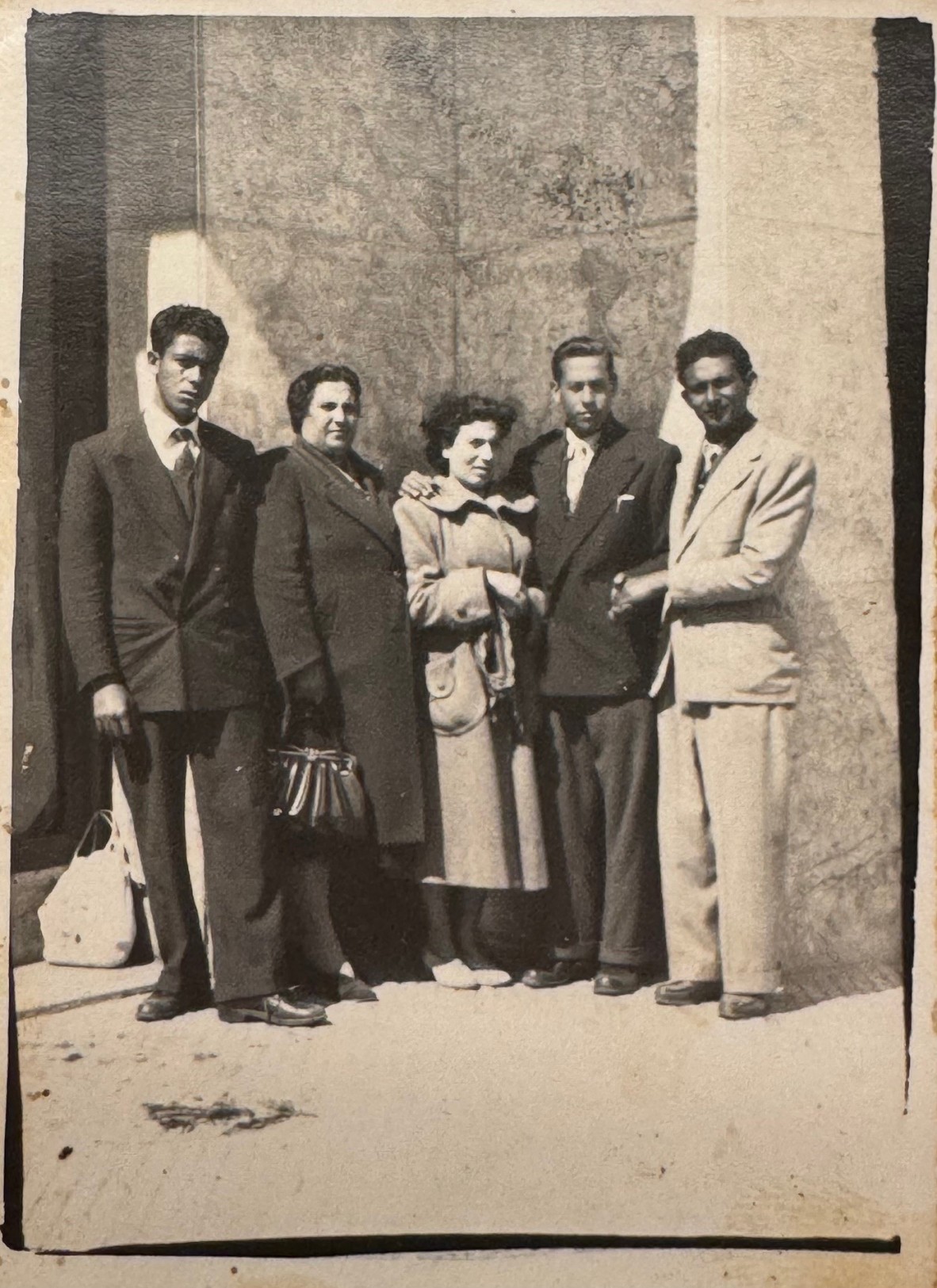
The family came to farewell Leonardo on his adventure to Australia. Image courtesy of the Scalia family.
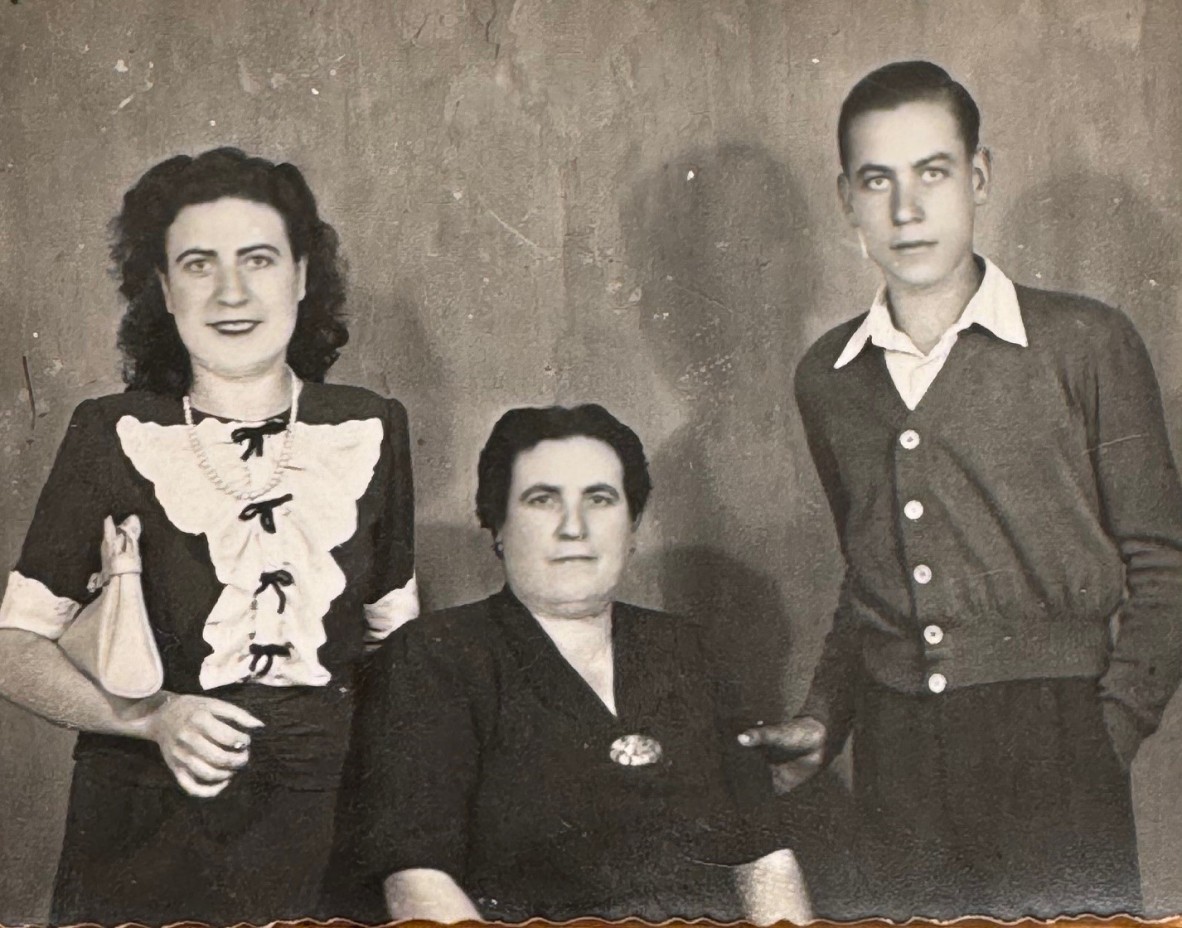
Leonardo with his mother, Agata and sister Anna. Image courtesy of the Scalia family.
After 40 long days at sea, the MV Toscana arrived in Melbourne. Leonardo took the chance to visit the Melbourne Museum and could not believe all the magnificent Italian marble statues he saw - a sight that a country boy from Sicily has never forgotten. The ship continued to Sydney where he disembarked. A fellow Sicilian was arranged to meet the ship and take him to the train station, ready for his lengthy train journey to Home Hill in North Queensland. After several days, he arrived in Brisbane and, once again, another Sicilian met him at the train station, gave him accommodation, and then arranged for him to go on the Cairns train to North Queensland. In Home Hill, he was met by members of the Scalia family already resident in Queensland. One was his uncle, Sebastiano Scalia, the brother of Leonardo’s father, Guiseppe.
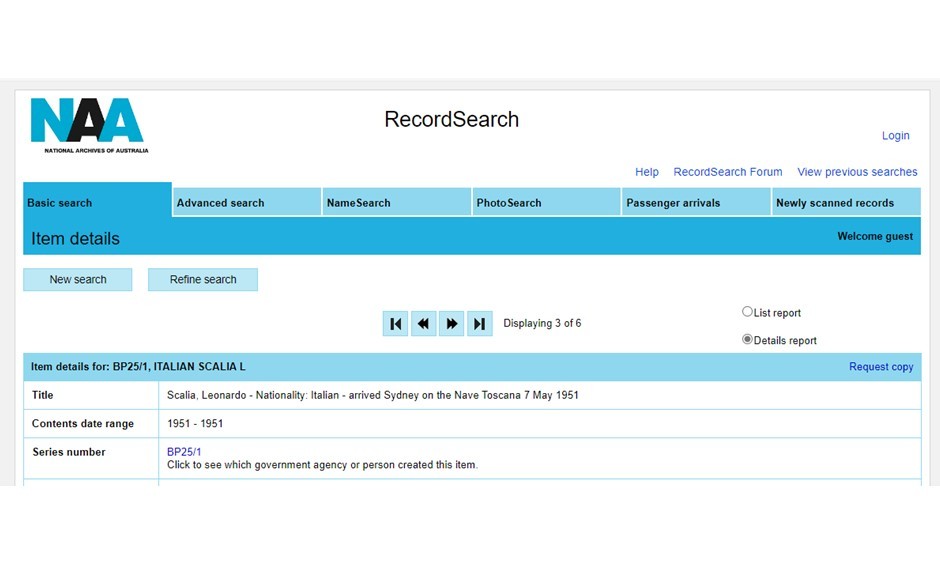
National Archives of Australia Record for the arrival of Leonardo Scalia in 1951.
Eager to begin work, Leonardo started working on the cane fields of Home Hill. His address on the electoral roll, when he became naturalised in 1957, was simply “Up River, Home Hill.”

Electoral Roll 1958 Ancestry.com. State Library of Queensland
Using his own cane cutting tool, he became part of the cane cutting gangs. Cane cutting had many perils, one of which was snake bites. Leonardo killed hundreds of snakes as he cut the cane. He worked long hours from early morning to dusk, and the cutters were paid by weight. In fact, it was a payment scheme known as “piece work” – the labourer was not paid by the day or by the hour, but rather by the amount of cane that was cut. The cane was then loaded onto trucks and taken to the mill. A fit energetic man like Leonardo could maximise his earnings by working hard and quickly.

Leonardo, in the foreground with his cane cutting tool. Image courtesy of the Scalia family.
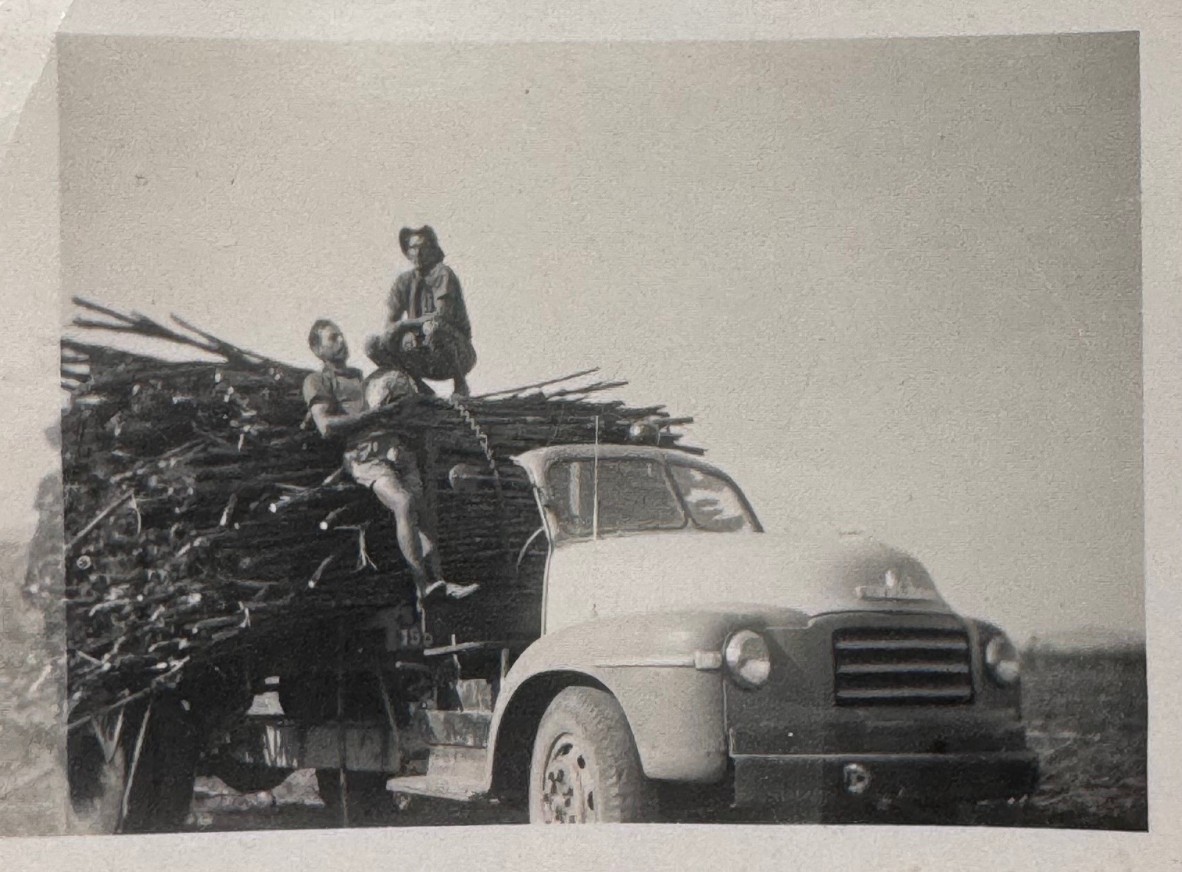
Leonardo, leaning back and loading cane onto a truck in Home Hill. Image courtesy of the Scalia family.
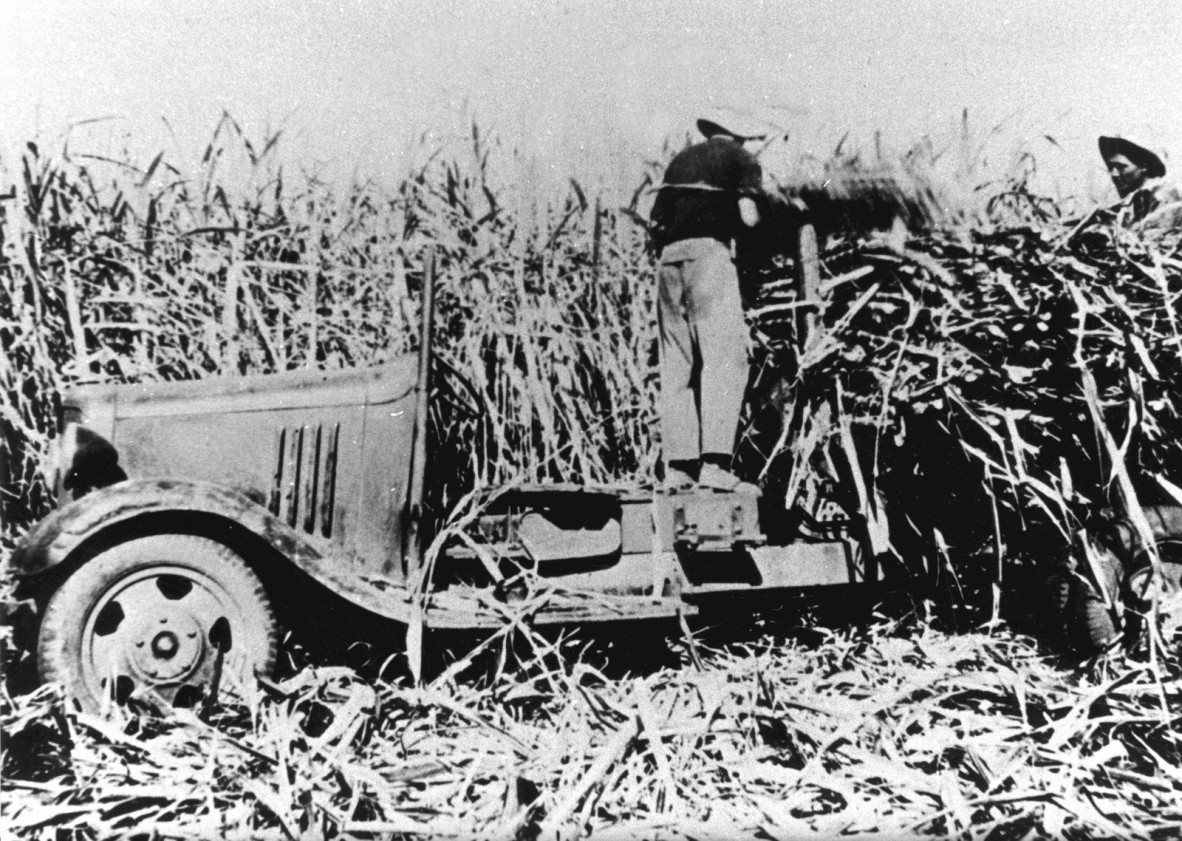
Loading cut cane onto a truck, Home Hill. Burdekin Shire Council Library Services, Image number: bur00157
In Home Hill, there were dances every Saturday night, mass at the Catholic Church on Sunday morning, and Scalia family parties with music and food. One or two nights per week, Leonardo went to English lessons. After 9 years he returned to Brisbane, and in the 1950s purchased a house in Kelvin Grove for £1,100 and a grocery store at Dickson Street, Wooloowin. In keeping with the chain migration pattern, Leonardo brought his mother, Agata, and sister, Anna, out to Queensland. Agata, as a widow, made her income by becoming a tailoress in Giarre. Many of the immigrant Italian girls worked in clothing factories or tailoring establishments in Brisbane.
Agata died in Queensland in 1972.
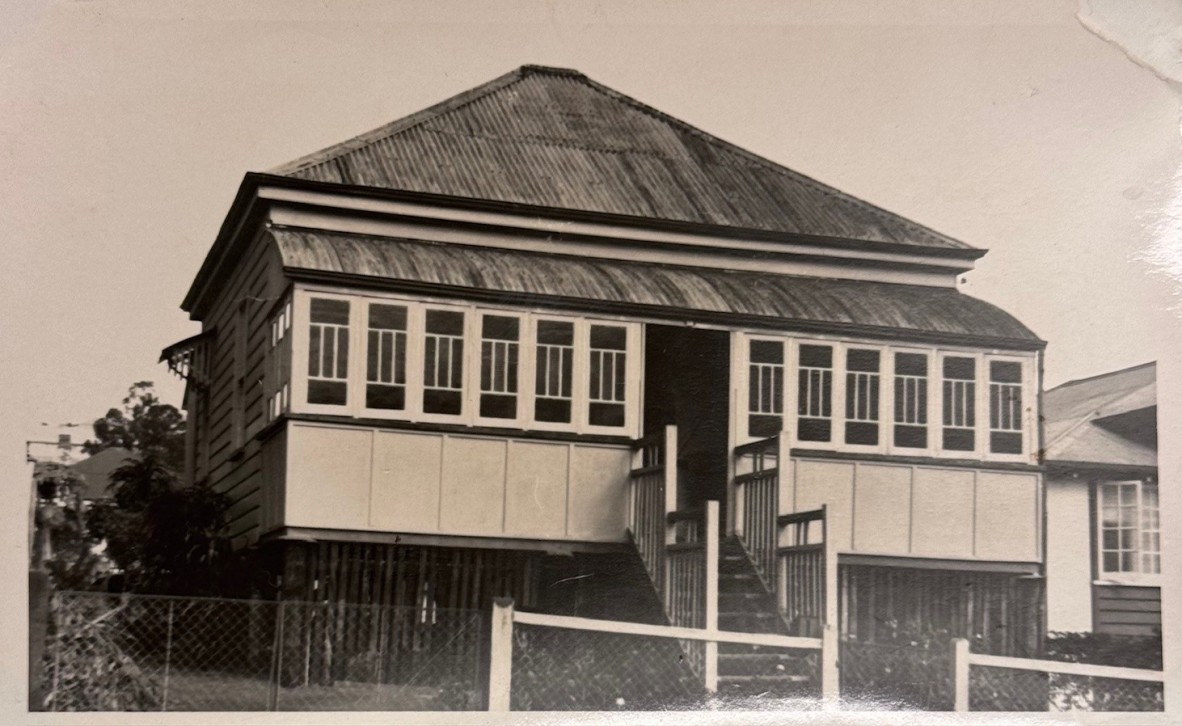
59 Park Street, Kelvin Grove – a home for Leonardo, Agata and Anna. Image courtesy of the Scalia family.
A very religious young man, Leonardo joined the Italian Catholic community who worshipped at the crypt in Fortitude Valley. Leonardo was an apostle of the community. Many of the Italian families from New Farm were also part of the congregation at the crypt. The crypt was to become the lower level of the Holy Name Cathedral, which was never built.
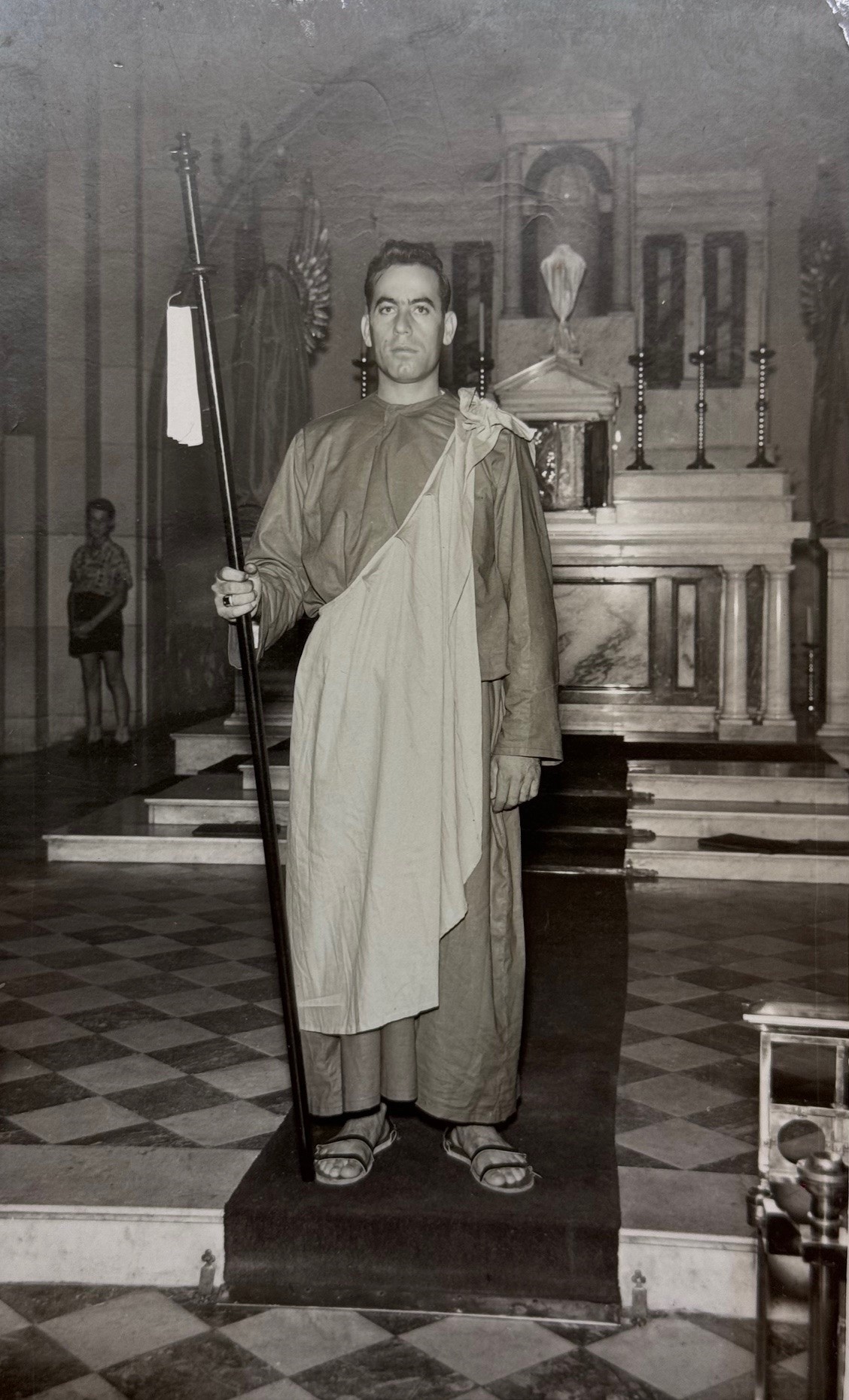
Leonardo as an apostle in the crypt, Brisbane, 1960. Image courtesy of the Scalia family.
Leonardo fell in love and married in 1966 – his wife was Maria Pafumi, also from Giarre, and they met when both were attendants at a Sicilian wedding. Leonardo was best man and Maria was a bridesmaid. Maria had arrived from Italy in 1961 and was 10 years younger than Leonardo. Maria worked at Olsens clothing factory in Fortitude Valley and another clothing establishment in East Brisbane near to where her family lived. The wedding was in St Mary’s Catholic Church at West End.
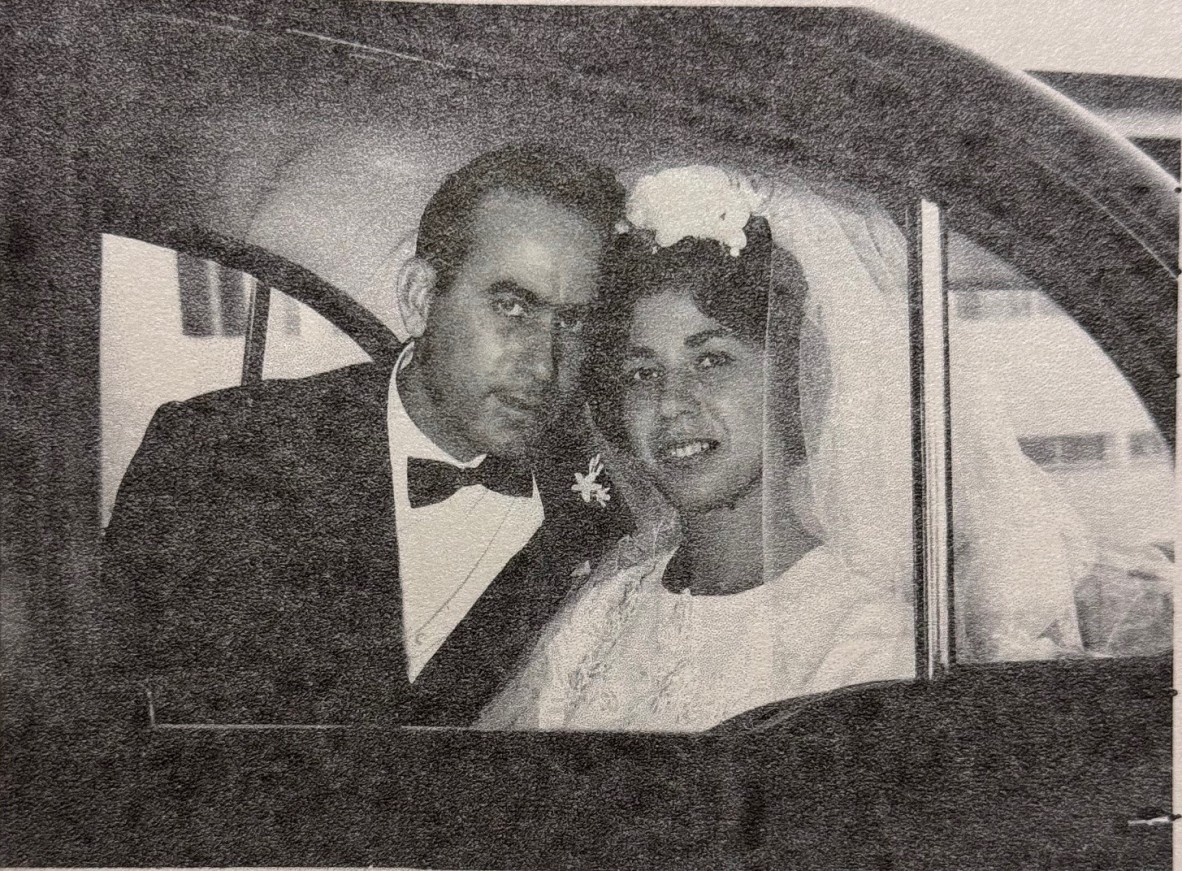
Leonardo and Maria on their wedding day in 1966. Image courtesy of the Scalia family.
Leonardo felt that a larger house was necessary for his new bride and the family they would have, so he purchased a large house further up Park Street, keeping the first cottage to rent and help pay off the mortgage. Three children arrived in the 1960s – two boys and a girl. The children attended the St Ambrose Catholic school on Enoggera Road, Kelvin Grove. The children and grandchildren were taught to speak the Sicilian dialect.
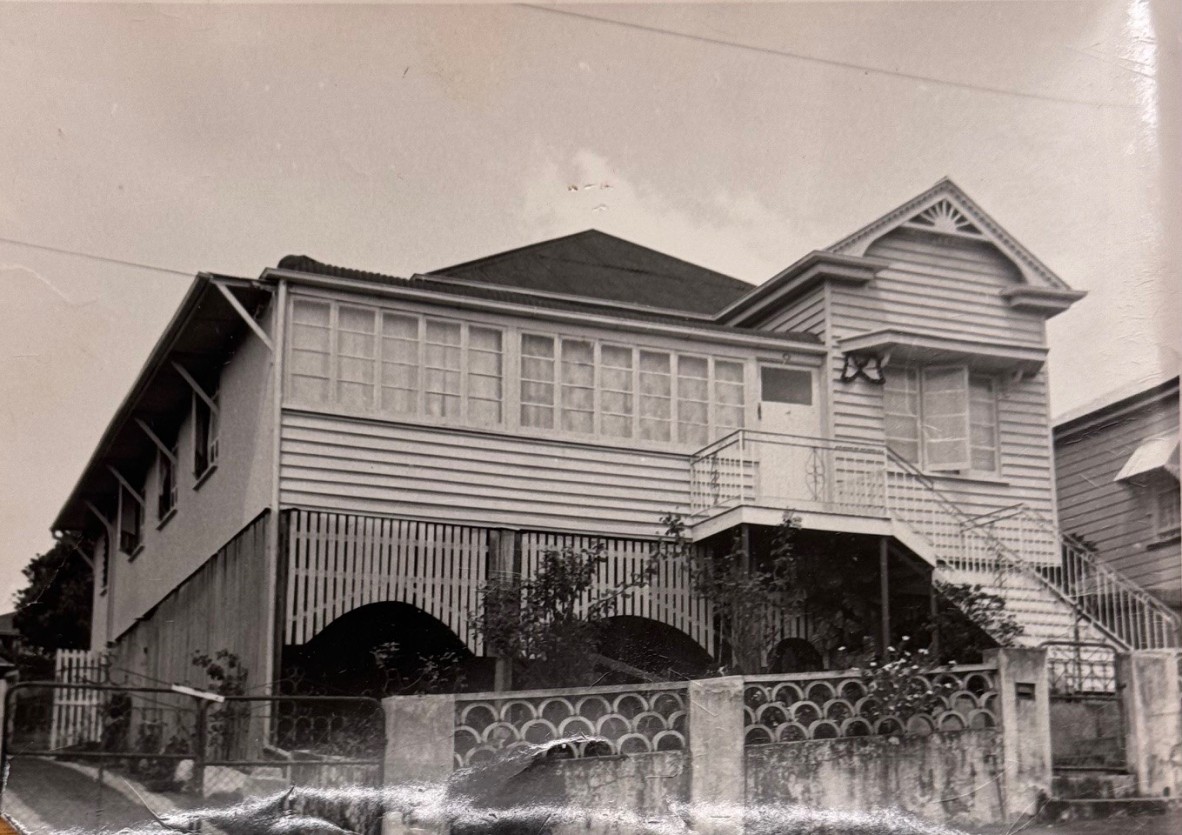
41 Park Street, Kelvin Grove – a home for Leonardo, Maria and their children. Image courtesy of the Scalia family.
Interestingly, Red Hill and Kelvin Grove were suburbs on the north side of Brisbane with a considerable number of Italian families. According to Maria, most of her time was spent speaking Italian in her community. Leonardo went to work for the Brisbane City Council. It was stable and steady work. Thirty-five years ago, Leonardo and Maria moved to a brand-new double-storied brick home in the northern suburbs of Brisbane, which is their current home.
Leonardo grew vegetables and fruit, made his own wine and developed a skill at making cannoli. Using a tool he designed himself, he and Maria made cannoli for Sicilian weddings and functions for many years, and were known in the community as the King and Queen of cannoli. Cannoli is a Sicilian pastry filled with cream that is made with ricotta. Leonardo and Maria were leaders in the community, always ready to assist others, and were devout members of their Catholic church community.
Leonardo and Maria returned to Sicily for a holiday in 1978, taking their 3 young children by car all around Italy and, of course, visiting their hometown of Giarre in Sicily. It was a memorable family holiday. However, Leonardo and Maria were delighted to return to their lives in Brisbane where there were much greater opportunities than in Sicily. For Leonardo, his journey to Australia, “this beautiful country”, in 1951 is something he celebrates to this day. Leonardo is 92 years old, and Maria is 82. Together they have made a great contribution to their new country and to their community.
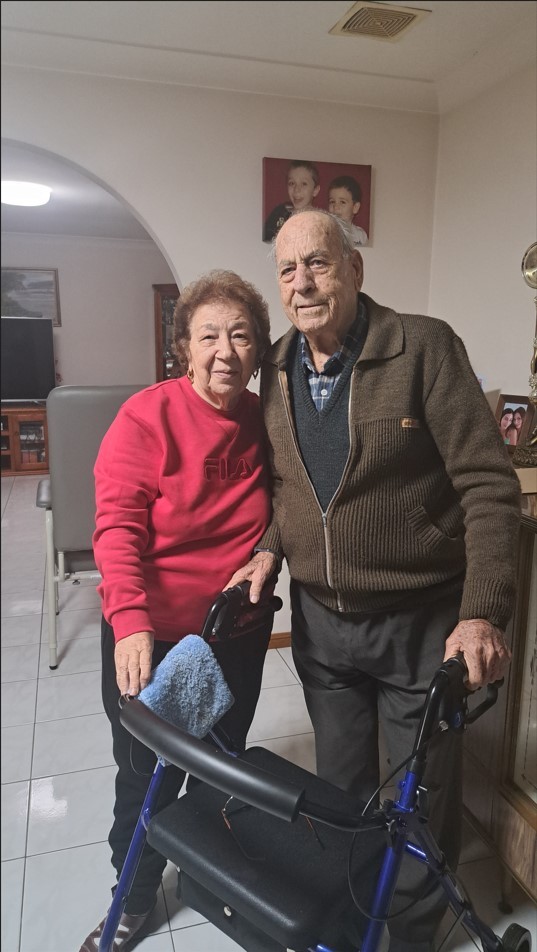
Leonardo and Maria in their beautiful home in 2024. Image by Christina Ealing-Godbold.
Further resources
Books
- How to trace your Italian ancestors : a guide for Australians and New Zealanders / Bette Leone
- Handy guide to Italian genealogical records / by Floren Stocks Preece and Phyllis Pastore Preece
- Italian genealogical records : how to use Italian civil, ecclesiastical & other records in family history research / by Trafford R. Cole
- Italians of Brisbane 1 : history of the Italian community from 1870 to 1940 / Fabio Baggio
- Italians of Brisbane 2 : events and personalities of the Italian community from 1945 to 1990 / Fabio Baggio
- If you had your time again, would you migrate to Australia? : a study of long-settled Italo-Australians in Brisbane / Ellie Vasta
- Italians in Queensland : some aspects of post-war settlement of Italian immigrants / by J.A. Hempel
- From Italy to Ingham : Italians in North Queensland / William A. Douglass
- La guida annuale per gli Italiani del Queensland
- P.O.W & internment camps : Australia 1939-47
- The Italian in North Queensland : absorption complete in three generations : how the North regards this nationality
- A migrant's story : the struggle and success of an Italian-Australian, 1920s-1960s / Osvaldo Bonutto
- Sugar, tears and eyeties / by Peter Dalseno
- The three saints : faith history tradition from Sicily to Queensland / Stefano Girola ; translated by Piero P. Giorgi
- The pre-war migrants : reminiscences from a past era / Maximilian Brandle
Under the Southern Cross : the quest for a new homeland / Maria Spina Gaudiello - Italian pioneers in the Innisfail District / editted by Ada De Munari Choat, Alf Martinuzzi and Ilma Martinuzzi O'Brien for the Innisfail and District Historical Society Inc
- Co.As.It. Italian Australian Welfare Association Inc. 1978-2008 : 30th anniversary commemorative booklet / Nella Alba-Calabrese
- Antonio Comollatti & Ann Reed : early settlers of Duaringa / by Jane Comollatti.
Journal
Articles
- The cultural significance of Italian migrants’ houses built in Brisbane, Australia / Faggion, Laura; Furlan, Raffaello
- A whisperer for all Italians: How wartime suspicions and legislation impacted the lives of Italian women in Queensland during World War II / Glaros, Maria
- Migration and place: Italian memories of North Queensland / Ricatti, Francesco
- Italy and Queensland: Interconnected histories / Kennedy, Claire; Dewhirst, Catherine
Dissertations
- From Sojourners to Setlers: Homes of Italian Migrants in Brisbane and their Meanings / Faggion, Laura ; Sipe, Neil ; Coiacetto, Eddo
- "We know that the Press is a powerful weapon": Italian-language newspapers defining and representing the Italian communities of Australia (1885-1972) / Piantavigna, Marianna
Photographs
- Photographs of Italian people in Queensland
- Photograph Albums of Italians in Stanthorpe 1930-1970
- Cardarelli Italian Hospital in Ingham, Queensland, ca. 1936. Negative number: 191685
- Joe Castellana playing a piano accordion for the crowds at the Australian-Italian Festival in Ingham Queensland 2013 / by Sarah Scragg. Image number: 29203-0001-0003
- Panoramic view of the Australian-Italian Festival in Ingham Queensland 2013 / by Sarah Scragg. Image number: 29203-0001-0128
Video
Websites
- The city of Giarre: Comune di Giarre
- Associazione Siciliana nel Queensland = Sicilian Association of Queensland
- Footprints of Italian Prisoners of War in Australia 1941-1947
- Cyndi’s List of genealogy sites on the Internet / Italy
- Comuni-Italiani.it – Italian cities and towns
- Italian Genealogical Group
- The Italian Australian Institute at La Trobe University
Databases
More information
One Search catalogue – https://onesearch.slq.qld.gov.au
Library membership – https://www.slq.qld.gov.au/services/membership
Ask a librarian - https://www.slq.qld.gov.au/services/ask-librarian
What’s on at State Library – https://www.slq.qld.gov.au/whats-on
Plan your visit – https://www.slq.qld.gov.au/visit
Comments
Your email address will not be published.
We welcome relevant, respectful comments.